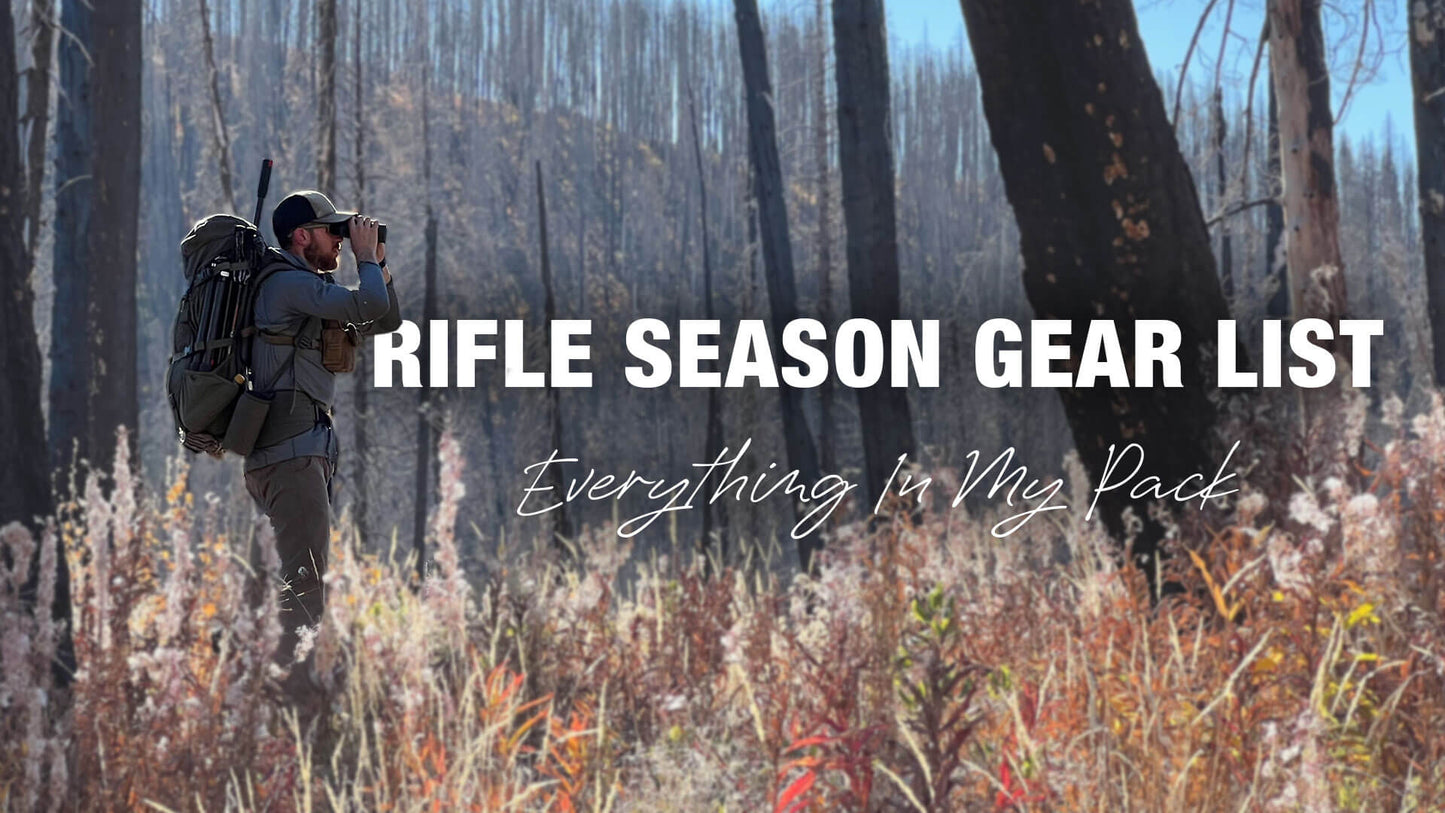
Mark and Steve are headed into the Idaho backcountry next week. For this mid-October backpack hunt, they will be covering ground and moving camp each day, as they search for both elk and mule deer.
If you want to get a better idea of the specific gear used for a backpack hunt like this one, we are sharing Mark's complete gear list — including links for each item, the weight breakdown, and more. This gear list spreadsheet also makes a great template for you to use and modify for your own needs.
Copy/Save the Gear List (Google Sign-In)
In addition to the itemized gear list above, Mark provided some additional context for on his gear choices in key categories...
PACK & ACCESSORIES
This is an 8-day hunt, so the K4 5000 Pack System is a great choice. As far as accessories, I use the K4 InReach Mini Holder on my right side (as a left-handed shooter, that is the opposite side of my rifle). On the right side of my hipbelt, I have a K4 Hipbelt Pouch (rangefinder and snacks), and a K4 Nalgene Holder. I also use two K4 Stash Pockets. One Stash Pocket is a catch-all for first aid and repair items, which I keep in my lid. The other Stash Pocket is my "kill kit", which contains my knife, sharpener, some paracord, and a heavy-duty contractor bag; that Stash Pocket lives in the rear "hydration sleeve" compartment on the K4 5000.
SHELTER & SLEEP SYSTEM
A good rule of thumb is to keep your shelter and sleep system under 5lbs. That includes your tent, sleeping bag/quilt, sleeping pad, pillow, etc. I own multiple shelters, so I choose among those options based on the season, location, terrain, and even the weather forecast.
For this hunt, I will be using the Katabatic Pinion Bivy and the Argali Owyhee 1P tarp. When weather allows, I will only use the bivy at night. But if the forecast shows a solid chance of precipitation or if the temps drop heavily, I will use the Owyhee for additional protection. During last year's rifle elk hunt in October, Steve and I used just a bivy each night, often setting them under the canopy of a large tree to provide cover.

When conditions allow it, the simplicity of a bivy camp cannot be beat.
FOOD & WATER
For food, aim to have 1.7-2.0lbs, totaling 3400-4000 calories per day. For water, have the ability to carry 4-6 liters of water and a simple system for filtering.
If you want to get into the nitty-gritty of food for backpack hunting and make a plan for your specific needs and preferences, then check out this great resource from our friend and trained dietician, Kyle Kamp of Valley to Peak Nutrition: https://exomtngear.com/nutrition. I tend to pack about 3,600 calories per day, which weighs around 1.8lbs (125 calories per ounce).
For water, I carry a narrow-mouth Nalgene HDPE Bottle (lighter than a standard Naglene), a 4-liter Hydrapak Seeker, and the 42mm Hydrapak Filter with a spare 1-liter filter bag. With these items, I can carry 6 liters of water at any given time. The 4-liter Hydrapak Seeker + Filter allows me to quickly fill and carry water, but doesn't require that I filter the water until I need to consume it. This makes it easy to quickly refill my Nalgene at any time, or filter water directly into my Jetboil when it is time to cook.
CLOTHING CONSIDERATIONS
You need the right clothes; not necessarily a lot of clothes. When it comes to clothing, less experienced backpackers and hunters tend to "pack their fears" and over-pack with duplicate layers, rain gear for dry hunts, and more.
I am not advocating that you throw caution to the wind and put yourself in a dangerous situation, but I do want you to be intentional about what you bring. As you gain experience outdoors (for all types of pursuits, not just hunting), pay attention to the conditions, your level of activity, and the clothing you use (and don't use) for that experience.
Weather in the mountains is certainly variable, but forecasts can give you a general indication of what to expect throughout a weeklong hunt in the Lower 48. (There are places, such as Alaska, where you need to be prepared for more variability.) On previous mid-October hunts in Idaho I have experienced temperatures in the teens some years, and temperatures in the 80s on other years.

Mark packs out an elk in 70-degree temps, on October 17th.
The essential items of my clothing system are simple and versatile, and will be there no matter what the forecast says. But in the days leading up to our hunt this year I will be monitoring the forecast and deciding on optional clothing items, such as puffy pants, cold-weather gloves, and rain gear. If the forecast is mild and mostly dry, I will not carry those items.
EVERYTHING ELSE
I could fill a whole book discussing the finer points of gear, so we certainly don't have room to cover everything in this blog article. But again, my complete gear list for this hunt is below...
If you have any questions, feel free to reach out by email. We also have a ton of great gear-related podcast episodes on the Hunt Backcountry Podcast.
Mark Huelsing is the host of the Hunt Backcountry Podcast and works at Exo Mtn Gear — though he's never been able to figure out his job title. Connect with Mark by sending him an email (mark at exomtngear.com) or DM @MarkTheFark on Instagram.
